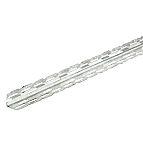I'm planning to dot'n'dab some walls, then paper/paint the plasterboard, i.e. no skim coat.
What do I do about outside corners? All the beading I've seen goes on top of the boards, which would be fine if I was having a skim coat, but....
What do I do about outside corners? All the beading I've seen goes on top of the boards, which would be fine if I was having a skim coat, but....




